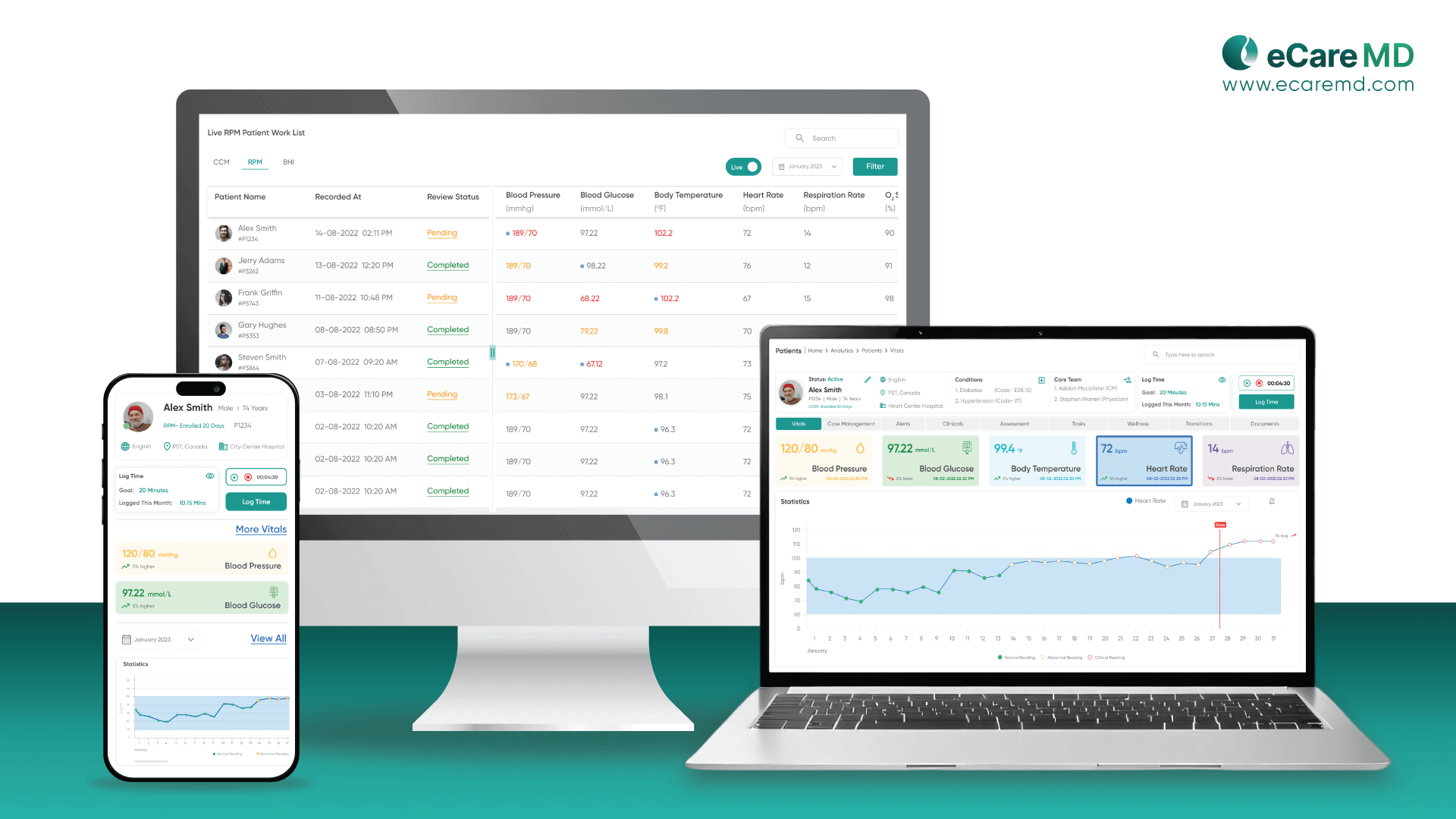Client Background
The client is a well-versed provider of chronic care services based in Alaska, United States. The client focuses on delivering chronic care services to patients with their compassion, medical expertise, and experienced medical staff. The client has a network of hospitals catering chronic care services to patients.
Business challenges
The client used a Chronic care management platform to manage the patient’s chronic conditions. While using the software, the client has faced some challenges, like:
1. Delays in interventions
The chronic care management software the client was using lacked the functionality to notify patients of abnormal changes in their health. Hence, care providers could not make interventions in time, resulting in health complications.
2. Lack of real-time health insights
The client faced difficulties continuously monitoring the patient's health vitals as the software lacked functionality. This resulted in attention to the patient's health, which hampered the patient's health outcomes.
3. Challenges in Patient Health Progress Evaluation
With limited staff resources and software functionality, the client could not evaluate the patient's health progress as per the care plan. It creates unawareness of care providers toward patient health, which hampers personalized care delivery.
Solution
The client approached Medarch Inc. for eCareMD software, and our team of business analysts and subject matter experts understood the client’s requirements and challenges by conducting multiple interaction calls and demonstrations. Upon receiving approval from the client, our teams implemented the eCareMD software into the client’s practice.
After implementing the software into practice, the client was able to provide better preventive care and increased patient satisfaction rates.
Solution Highlights
Our eCareMD software comprises various features that enable providers to deliver more preventive patient care.
Some of the features that addressed the client’s challenges are:
1. Alerts and notifications
The eCareMD software consists of alerts and notifications functionality that notify care providers if the patient's health goes beyond threshold levels. These generated alerts notify care providers to make early interventions to resolve patient health complications that ultimately led to reduced patient hospital readmissions and emergency visits.
2. Real-time vital tracking dashboard

The eCareMD software is integrated with various remote patient monitoring tools, such as blood pressure monitors, pulse oximeters, and smart glucometers. These vital readings are transmitted to the care provider's eCareMD software and displayed on the dashboard. Using this, the client could regularly monitor patient health vitals, trends, fluctuations, etc. This enabled care providers to monitor patient health remotely.
3. Assessment and care plan progress evaluation
Using the eCareMD software, care providers could assign assessments to patients. The responses submitted helped the providers understand the patient's health condition. The software also allowed the care provider to evaluate the care plan's progress by checking the goals (pending, in progress, achieved), barriers, interventions, etc. This resulted in the detection and addressing of potential health issues.
Value Delivered
1. Reduced patient hospital readmission and emergency visits
The alerts and notifications feature enabled care providers to make necessary interventions on time if a patient's vitals exceed threshold levels. It resulted in a reduction in hospital readmission rates and emergency visits for patients.
2. Early detection of potential health issues
The real-time tracking vital dashboard helped care providers view the changes in patient health, fluctuations, and trends. That resulted in the early detection of potential health issues and resolved complications.
3. Improved patient health outcomes
The software's assigned assessment and care plan progress evaluation functionality helped providers understand the patient's health condition and customize the care plan according to the patient's needs. This resulted in improved patient health outcomes.

